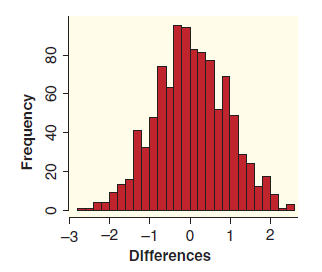Diabetes tends to be more prevalent in urban populations, but why this is so is not fully
Question:
(a) Is this an observational study or randomized experiment?
(b) If we are interested in whether there is a difference in mean insulin resistance between the two groups, what are the null and alternative hypotheses?
(c) The difference in sample means from the original sample is D = xÌ…FA ˆ’ xÌ…PM = 1.8 ˆ’ 6.2 = ˆ’4.4. Figure 4.27 shows 1000 random assignments of insulin-resistant scores from the original sample to each of the two groups. Is it likely we will reject the null hypothesis?
Figure 4.27

(d) What is the p-value?
(e) State the conclusion of the test in context.
Fantastic news! We've Found the answer you've been seeking!
Step by Step Answer:
Related Book For 

Statistics, Enhanced Unlocking The Power Of Data
ISBN: 9781119308843
2nd Edition
Authors: Robin H Lock, Patti Frazer Lock, Kari Lock Morgan, Eric F Lock, Dennis F Lock
Question Posted:





